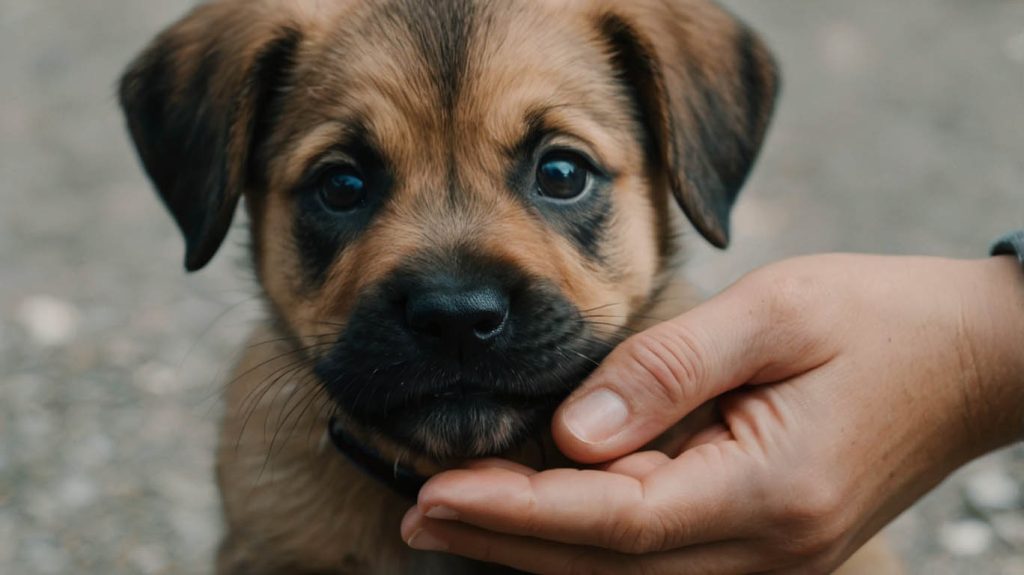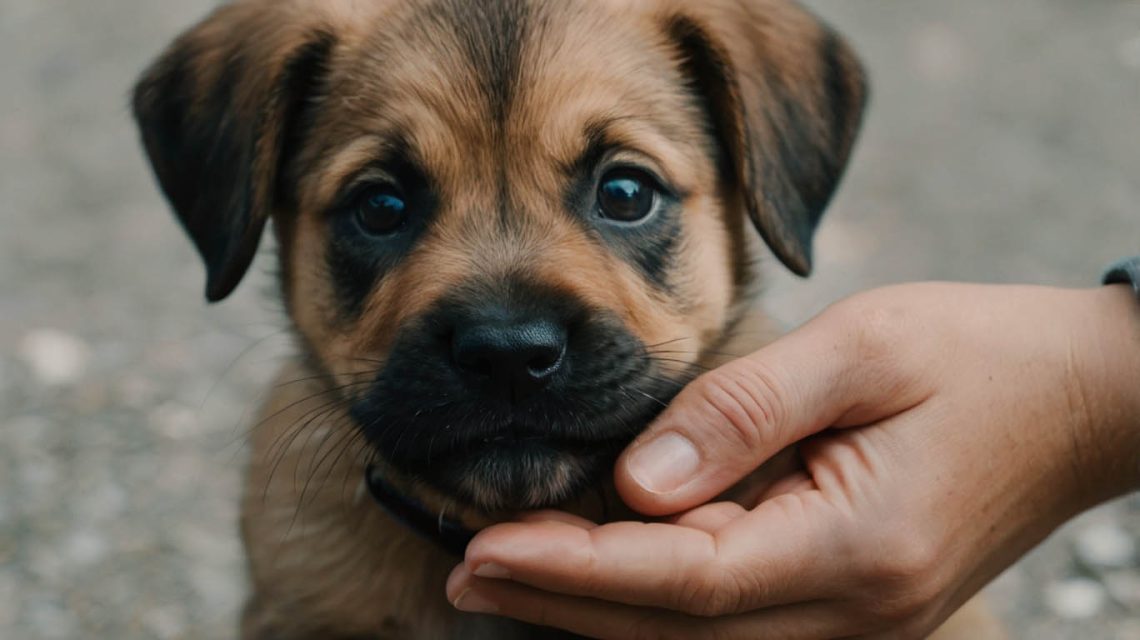How to Stop a Puppy from Biting Hands and Feet: A Step-by-Step Guide
The first week with her new Labrador puppy, Charlie, was pure bliss for Emily. He was a fluffy, cuddly bundle of joy. However, by week two, a new reality set in. Charlie had transformed into what Emily affectionately, yet desperately, called her “tiny land shark.” Every attempt to pet him resulted in sharp little teeth on her hands. Every step she took was an invitation for him to attack her feet and ankles. She found herself constantly wondering, with mounting frustration: how to stop a puppy from biting hands and feet?
Emily’s experience is a universal one for new puppy owners. The joy of a new puppy is often accompanied by the painful, relentless nipping. It can be frustrating and even make you question if you’re doing something wrong.
Consequently, this definitive guide is here to reassure you and provide a clear, step-by-step plan. We will explore why your puppy bites, teach you the most effective training techniques, and show you how to build a loving bond without becoming a human chew toy. Therefore, you can learn exactly how to stop a puppy from biting hands and feet and enjoy a peaceful, playful relationship.
Why Do Puppies Bite Hands and Feet? Understanding the Behavior
Before you can solve the problem, you must first understand that this behavior is completely normal. Your puppy isn’t being aggressive; they are simply being a puppy. There are three main reasons for this biting.

Teething: A Major Cause of Biting Hands and Feet
Just like human babies, puppies go through a painful teething process between 3 and 6 months of age. Their adult teeth are pushing through their gums, which is incredibly uncomfortable. Chewing on things—including your hands—helps to alleviate some of that pressure and pain.
Play and Exploration: Learning Through Their Mouths
Puppies don’t have hands. They explore and interact with the world almost entirely with their mouths. When they nip at you, they are often trying to initiate play, get your attention, or simply figure out what you are. They are not trying to hurt you.
Lack of Bite Inhibition: The Most Important Skill to Teach
This is the most crucial concept to understand. Bite inhibition is a dog’s ability to control the force of their bite. Puppies learn this skill by playing with their littermates. If one puppy bites another too hard, the bitten puppy will yelp and stop playing. The biter learns that a hard bite ends the fun. Your job is to continue teaching this lesson. Learning how to stop a puppy from biting hands and feet is really about teaching them how to use their mouth gently.

The Core Strategy: How to Stop a Puppy from Biting Hands and Feet
The solution to puppy biting is a three-pronged approach: teach them that human skin is sensitive, redirect their biting onto appropriate items, and manage their environment to prevent the behavior in the first place.
Step 1: Mastering Bite Inhibition Training
This is the foundation of your training. You need to clearly communicate that biting your skin is not acceptable.
- The “Play Stops” Method: This is the most effective technique. The moment you feel your puppy’s teeth on your skin, let out a sharp, but not scary, “Ouch!” or “Nope!” Immediately withdraw your hand and stop all play and interaction. Fold your arms and look away for 15-30 seconds. This teaches your puppy a simple but powerful lesson: “When you bite me, the fun and attention go away.”
- Consistency is Key: Every single person in your household must follow this rule every single time. If one person allows nipping, it will confuse the puppy and undermine your training efforts.
Step 2: The Power of Redirection
A puppy needs to chew. Your goal is not to stop them from chewing, but to teach them what to chew on.
- Always Have a Toy Ready: Keep appropriate chew toys in every room of the house. When you sit down to play with your puppy, have a toy in your hand. If they start to go for your hand, immediately redirect their mouth onto the toy and praise them enthusiastically when they start chewing it.
- Make Toys More Interesting: Use a variety of textures—soft plush toys, hard rubber toys (like a Kong stuffed with treats), and rope toys for tug-of-war. This keeps them engaged and makes the toys more appealing than your hands. Knowing how to stop a puppy from biting hands and feet often comes down to making the alternative more fun.
Step 3: Teaching “Leave It” and Positive Interruption
Instead of just reacting to a bite, you can proactively prevent it.
- Reward Calm Behavior: When your puppy is calmly licking or nudging your hand instead of biting, reward them with praise and a small treat. You are reinforcing the correct way to interact.
- Teach “Leave It”: This command is invaluable. Start by holding a low-value treat in a closed fist. When your puppy sniffs or licks your hand, say “Leave it.” The moment they pull their head away, say “Yes!” and give them a much higher-value treat from your other hand. This teaches them that ignoring one thing leads to something better.
How to Stop a Puppy from Biting Feet Specifically
Biting moving feet and ankles is a common and particularly frustrating problem. The movement triggers a puppy’s natural prey drive.
- Be a Tree: The moment your puppy goes for your feet, stop moving completely. Become as boring as a tree. A stationary object is far less fun to attack than a moving one.
- The Treat Toss: Keep treats in your pocket. When your puppy starts to lunge at your feet, say “Oops!” and toss a treat a few feet away. This redirects their attention and moves them away from your ankles.
- Manage the Environment: In the early stages, avoid wearing dangling shoelaces or fluffy slippers, which are extra tempting. Keep a toy nearby to redirect them when they approach your feet.
What NOT to Do: Common Mistakes That Make Puppy Biting Worse
Your reaction is just as important as your training. Avoid these common mistakes.
- Do NOT Use Physical Punishment: Never tap your puppy’s nose, hold their muzzle shut, or use any other physical force. This does not teach them bite inhibition; it teaches them to be afraid of you and can lead to fear-based aggression later in life.
- Do NOT Use Your Hands as Toys: Avoid “wrestle” or “rough-housing” with your hands. This sends the message that hands are appropriate playthings to be bitten.
- Do NOT Pull Your Hand Away Quickly: A fast-moving hand can seem like a fun game of chase. It’s more effective to let your hand go limp and then slowly withdraw it.
A Case Study Resolved: How Emily and Charlie Found Peace
Let’s return to Emily and her “land shark,” Charlie. Initially, Emily tried yelping, but it only made Charlie more excited. So, she switched to the “play stops” method. Every time she felt his teeth, she would say “Nope!” and immediately stand up and turn her back for 30 seconds.
Furthermore, she scattered chew toys all over her living room. Before she even sat down to pet him, she would grab a rope toy. She taught him how to play tug-of-war and praised him for chewing on the toy instead of her. For her feet, she used the “be a tree” method and the treat toss. The first week was challenging, but by the third week, she saw a dramatic improvement. Charlie was learning that hands were for gentle pets and toys were for fun biting. Emily had finally figured out how to stop a puppy from biting hands and feet by being patient and consistent.
The Final Verdict: Consistency is Your Superpower
Stopping a puppy from biting is a process that requires patience, consistency, and a positive approach. Remember that you are teaching a baby animal the rules of living in a human world. By focusing on bite inhibition, redirection, and positive reinforcement, you will not only solve the biting issue but also build a stronger, more trusting relationship with your new best friend.
You can do this! Your hard work now will pay off for a lifetime. What has been your biggest challenge with puppy biting? Share your stories and questions in the comments below!


